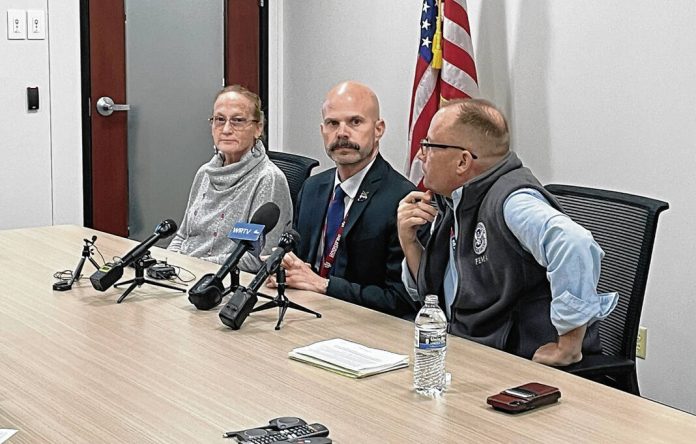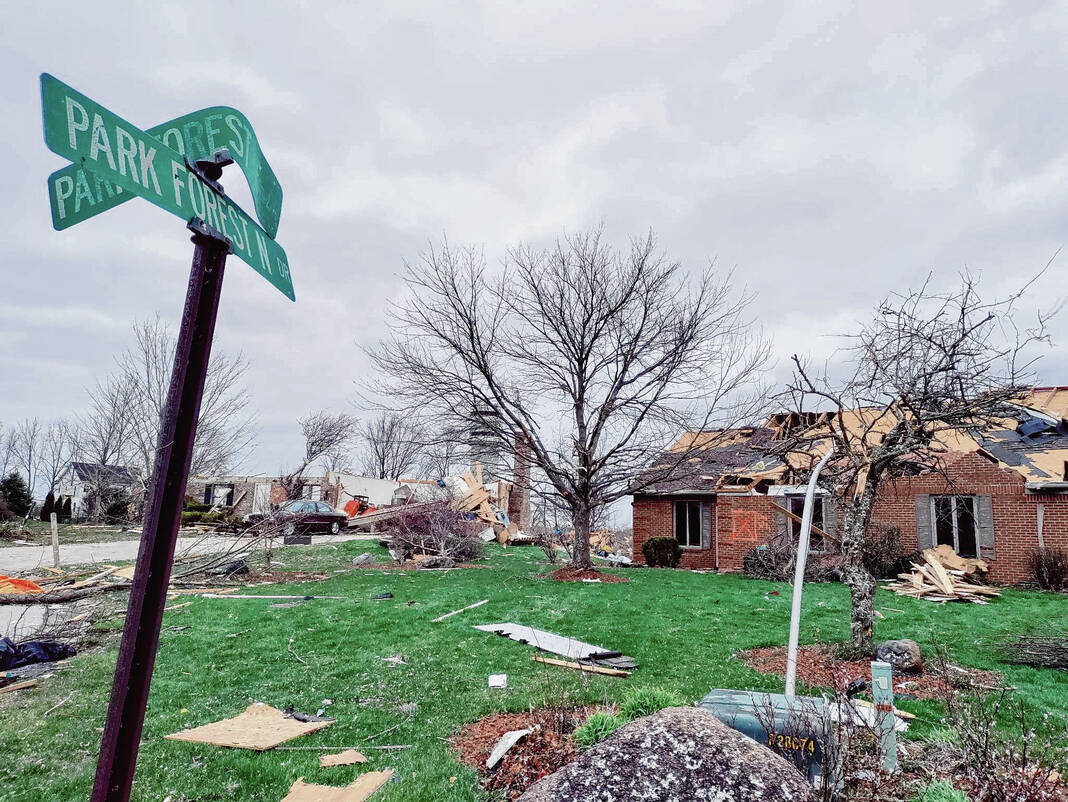INDIANAPOLIS — Federal aid is now available for local residents affected by tornadoes and severe storms late last month.
President Joe Biden approved a request for a major disaster declaration for Indiana, making federal disaster assistance available to supplement state and local recovery efforts following severe storms on March 31 and April 1. Severe storms caused a total of 23 tornadoes across the state, damaging more than 1,000 structures, injuring 34 and killing five. The tornado outbreak was likely the fifth worst outbreak in Indiana history.
In Johnson County, two tornadoes touched down on March 31: an EF-0 near Bargersville that downed power lines and damaged buildings and an EF-3 that caused significant damage in Whiteland. In Whiteland, a total of 179 homes were damaged by the storm, including 16 homes that were destroyed. Straight-line winds also caused damage across the county, including in Franklin.
The federal declaration makes funding available to affected individuals not only in Johnson County, but also Allen, Benton, Clinton, Grant, Howard, Lake, Monroe, Morgan, Owen, Sullivan and White counties. Assistance available includes grants for temporary housing and home repairs, low-cost loans to cover uninsured property losses and other programs to help individuals and business owners recover from the effects of the disaster, according to the Federal Emergency Management Agency.
During a press conference in Indianapolis Monday, federal and state officials outlined the state’s disaster response and the federal aid process. Having the federal declaration will expand the Indiana Department of Homeland Security’s bandwidth to provide aid, said Joel Thacker, IDHS executive director.
Because local and state resources were quickly overwhelmed following the storms, state officials asked Gov. Eric Holcomb to expedite a request for federal assistance to the White House, Thacker said.
FEMA’s Disaster Survivor Assistance Teams were expected to be on the ground later Monday before going door to door in the hardest hit counties to make sure residents are getting registered for federal aid, said Brian Schiller, a federal coordinating officer for FEMA.
“We have folks that will be on the ground in these 12 counties and affected communities as early as (Tuesday),” Schiller said. “We will be meeting the survivors where they are.”
Over the next week or so, federal officials will also be working to identify areas where they can establish disaster recovery centers. This will allow survivors the opportunity to submit their paperwork in person, ask questions and work out any issues they may have, Schiller said.
Officials also stressed Monday that residents who have already registered for state disaster aid by calling 211 will need to separately register for federal aid. There is no automatic registration just because a resident already applied for state aid, Schiller said.
Survivors applying for aid should also make sure to reach out to their insurance companies and have claims filed to speed up the process, Schiller said.
“That is oftentimes the quickest way to get the response that they are looking for,” he said.
What is key now is for the word to get out about resources, especially for those who no longer have homes and are staying in hotels, Thacker said.
“Being in these counties multiple times, Sullivan (and) Johnson, especially, many of those folks are gone,” he said. “Their home was completely wiped away, they’ve gone somewhere else to seek assistance that we may not know about. … It’s important to find those folks and make sure that they call the number and go to that website or that app to make sure that we know where they are and what assistance is needed.”
State officials also took a few moments to thank local emergency officials and Voluntary Organizations Active During Disasters for their hard work.
“The widespread damage … being really from, as far north as Lake County all the way down to Monroe County, it’s really been difficult getting out to assess the damage,” Thacker said. “But we really appreciate the work of our local emergency managers, assisting our folks within IDHS and now welcome the additional collaboration and assistance through FEMA.”
IDHS officials have also been working with Voluntary Organizations Active During Disasters. These organizations brought the agencies a wealth of immediate resources, said Mary Moran, director of emergency management and preparedness for IDHS.
“We want to thank them for all that they’ve done so far because without them, we’d be much more delayed in getting this recovery started,” she said. “I know we’ve had teams out cutting debris, serving food, serving water, passing out cleaning supplies, just pretty much every basic need right off after an event like this, our voluntary partners have stepped in to help.”
While FEMA is on the ground now, they are only in a supporting role as the state is taking the lead. Schiller said the agency couldn’t ask for a better partner than the state of Indiana.
“This is locally executed. This is state-led,” Schiller said. “We’re here to support through our federal resources.”
FEMA teams will be on the ground for as long as it takes to ensure that they reach everyone in the affected counties.
“There is an application period, which is up to 60 days from the event,” Schiller said. “So if that’s what it takes to ensure that we’ve reached everyone in the affected counties, we’re prepared to do so.”
The deadline to apply for assistance is June 14. For more information, go to Disaster Assistance.gov.
HOW TO GET AID
Residents who sustained losses because of severe weather late last month can apply for federal assistance in three different ways. The deadline to apply for FEMA assistance is June 14:
- Online at DisasterAssistance.gov
- By phone at 800-621-3362. TTY users can call 800-462-7585; 711 or Video Relay Service users can call 800-621-3362.
- Downloading and using the FEMA App
- The FEMA helpline will be available from 7 a.m. to 1 a.m. daily.
To apply for assistance, residents need the following information:
- Address with zip code
- Condition of damaged home
- A general list of damage and losses
- Insurance information, if available
- Social Security number
- Banking information, if they choose direct deposit for funds
- Phone number where they can be reached
- Address where they can get mail or an email address for electronic updates
Source: Federal Emergency Management Agency










